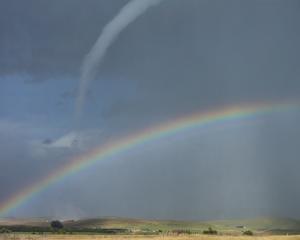A day before the birds returned to Dunedin, surveillance cameras filming their home revealed a visit from a stoat, which had been hunted for more than two months.
Ecosanctuary conservation manager Elton Smith said four juvenile kiwi returned to the ecosanctuary on August 18 because they were big enough to fight a stoat. A kiwi could defend itself against a stoat if it was 1.2kg or heavier.
Returning the kiwi to the ecosanctuary was the best option available to Doc, he said.
In the ecosanctuary, four motion-sensing cameras covering the kiwis' feeding boxes, filmed a stoat on August 17.
The lens of the camera was frozen from a hard frost and the image of the full grown stoat appeared ''ghostly'', he said.
Ecosanctuary staff hoped the stoat was dead after poisoned rabbit mince was laid in 220 bait stations in the ecosanctuary earlier this month and 19 baits were missing.
''You'd like to think at least one of those has been taken by a stoat. We live in hope.''
Small birds or mice could have eaten the poison, he said. A stoat dog would search the ecosanctuary on September 7 and should signal if a stoat was still alive.
''If the dog doesn't get excited in three days of walking around, it's a high chance that we no longer have a stoat alive,'' Mr Smith added.
Doc biodiversity services manager Jo Macpherson, of Franz Josef, said returning the juvenile kiwi to the ecosanctuary if a stoat was loose posed a ''slim risk'', because the kiwi were big enough to defend themselves.
The birds were in ''good health'' and a Doc staff member was assigned to monitor their progress.
If a stoat injured a kiwi, they would be evacuated again, she said.
Back in June a dozen juvenile kiwi were evacuated to Rona Island, in Lake Manapouri, and Centre Island, in Lake Te Anau, by Department of Conservation staff, after stoats prints were found in the ecosanctuary.
On the island, four kiwi - Sven, Yang, Cuso and Koa - began to lose weight, so were taken to Wellington Zoo for ''intensive care'', including supplementary feeding.
The birds were being fed at the ecosanctuary and would be weaned so they could fend for themselves in the wild.
The eight other evacuated kiwi would not return to the ecosanctuary, as they had ''adapted well to island life'', Mr Smith said.












